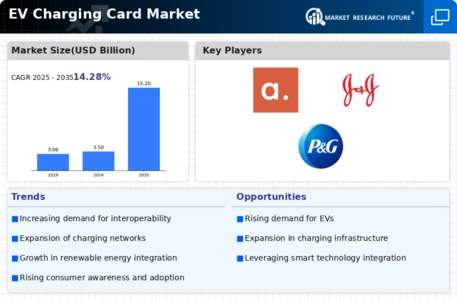By region, the study provides market insights into North America, Europe, Asia-Pacific, and Rest of the World. The anticipated expansion of the EV Charging Card market in North America can be attributed to several key factors. The strategic expansion of charging infrastructure is paramount to facilitating the widespread adoption of electric vehicles. Notably, in North America, there has been a deliberate initiative to augment the quantity of charging stations, encompassing both public and private facilities. In the United States alone, 6,300 fast chargers were installed in 2022, with approximately 75% attributed to Tesla Superchargers.
The aggregate number of fast chargers reached 28,000 by the close of 2022. Charging cards emerge as a pivotal facilitator, enabling users with seamless access to this growing and diversified charging network. This underscores the instrumental role of charging cards in enhancing the accessibility and usability of the expanding charging infrastructure.
Further, the major countries studied in the market report are the US, Canada, Germany, France, the UK, Italy, Spain, China, Japan, India, Australia, South Korea, and Brazil.
Figure 2: EV CHARGING CARD MARKET SHARE BY REGION 2022 (USD Billion)

Source: Secondary Research, Primary Research, Market Research Future Database and Analyst Review
Europe's EV Charging Card Market accounts for the second-largest market share as A substantial effort is underway to amplify the charging infrastructure throughout Europe, with robust investments from governments, businesses, and charging network operators focused on deploying public charging stations and high-speed chargers. By the conclusion of 2022, the total fast charger inventory in Europe exceeded 70,000 units, marking an impressive 55% surge compared to 2021. Key contributors to this growth include Germany, boasting over 12,000 fast chargers, followed by France with 9,700, and Norway with 9,000 units.
In this dynamic landscape, charging cards emerge as indispensable instruments for users, facilitating seamless access and payment for charging services across the extensive and diverse charging network prevalent in the region. This underscores the strategic importance of charging cards in optimizing the user experience within the evolving electric mobility sector in Europe. Further, the German EV Charging Card Market held the largest market share, and the UK EV Charging Card Market was the fastest-growing market in the European region
The Asia-Pacific EV Charging Card Market is expected to grow at the fastest CAGR from 2023 to 2032. Governments across the Asia Pacific region are actively instituting a range of initiatives and policies aimed at fostering the widespread adoption of electric vehicles. These efforts encompass financial incentives, subsidies, and the development of infrastructure conducive to electric vehicles. One notable example is the Faster Adoption and Manufacturing of (Hybrid &) Electric Vehicles in India (FAME India) Scheme, launched in 2015 to reduce reliance on fossil fuels and address vehicular emissions.
The current implementation, Phase II of the scheme, boasts a substantial budget of INR 10,000 Crores (approximately $1.2 Billion) over 5 years starting from April 1, 2019. Of this budget, around 86% is allocated to stimulate demand for electric vehicles, supporting initiatives such as 7,000 e-Buses, 500,000 e-3 Wheelers, 55,000 e-4 Wheeler Passenger Cars (including Strong Hybrid), and 1 million e-2 Wheelers. Recognizing the pivotal role of government support, particularly in creating an environment conducive to growth, is essential in understanding the dynamics of the EV charging card market.
Moreover, China’s EV Charging Card Market held the largest market share, and the Indian EV Charging Card Market was the fastest-growing market in the Asia-Pacific region.















Leave a Comment